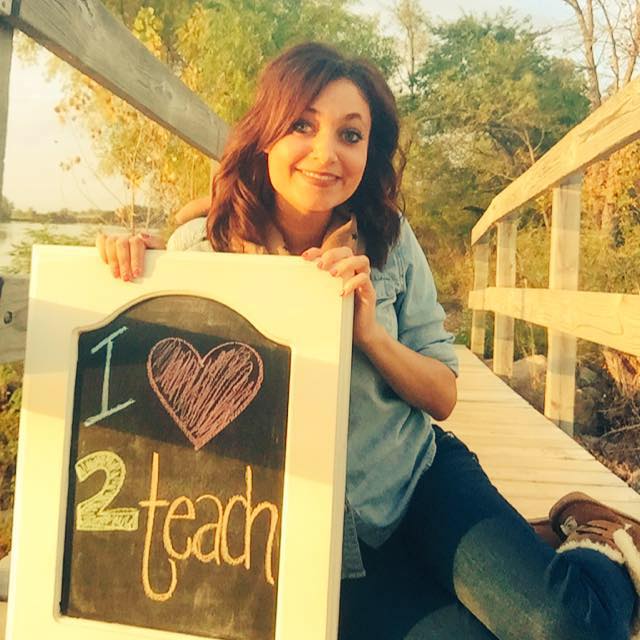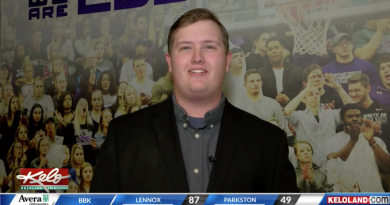Teacher Pay Bill
Last November, the South Dakota Blue Ribbon Task Force on Teachers and Students issued its final report. It noted that schools matter to a community, that an important factor in student success is a highly-qualified teacher, that all students should have equal access to learning opportunities. That the state faces a teacher shortage, that no one plan will fit the needs of all school districts. That funding equity is essential and that citizens expect that tax dollars are used in the most cost-effective way.
In other words, good teachers are important to student success. And that, indeed, South Dakota should increase its average statewide teacher salary (the lowest in the nation), which would attract and keep teachers in the state.
With an interview with a student teacher, Marissa Chau, I questioned her about her thoughts on the teacher bill being passed. “I think that the bill being passed will be a great because many future teachers getting their degrees in South Dakota will stay in state instead of looking for jobs else where,” says Chau.
The South Dakota House and Senate, in their 2016 session, took the report into consideration – and after much back-and-forth – did finally pass SB 131.
On March 11 Governor Dennis Daugaard did sign – the three bills that comprise the education package. As part of the legislation,the state’s sales tax was raised for the first time since 1969 – up a half-penny – an increase that will generate $67 million new and ongoing dollars for K-12 education.
This package also offers more support for teachers in the classroom, including $1 million in ongoing revenue for mentoring programs.
The legislation makes South Dakota’s average teacher salary the anchor for state aid funding. It additionally requires policy makers to assess teacher salary status every three years.
The average public-school teacher salary in the United States in the 2012-2013 academic year was $56,000. In South Dakota, that average was $39,580. In the neighboring states of Minnesota and Iowa, that average was bumped up. The Minnesota average public-school teacher salary for 2012-2013 was $56,268, and in Iowa, $51,528.
“I was considering going and looking for jobs outside the state, the teacher that I am doing my student teaching under told me that she went to Minnesota to start off her career. She did this because she had a family and wanted to make more money before coming back to South Dakota to teach,” says Chau.
Starting teacher salaries for 2012-2013 featured similar disparities. In South Dakota, a starting teacher’s salary was $29,851, while in Minnesota it was $34,505 and in Iowa, $33,226.
While SB 131 is better than nothing, the average raise, when plugged into the National Education Association (NEA) statistics for 2014, the governor’s target average salary of $48,500 does not bring the state’s teacher pay up to 37th in the nation. Rather South Dakota and Mississippi only trade places for 50th and 51st honors.
That is because the new K-12 funding formula that apportions money to South Dakota teachers does not complete the task. This is courtesy of the bill’s three amendments.
The first amendment – the Mickelson (Representative G. Mark Mickelson, R-13/Sioux Falls) amendment dictates how schools must use the new money, but keeps in place the standard for average salaries to grow by 85% of local need. Strictly followed, this leaves 138 out of the state’s 150 districts paying almost 6,800 out of 9,400 teachers less than Governor Daugaard’s target salary.
The second House amendment came from Representative Jacqueline Sly (R-33/Rapid City), the co-chair of the Blue Ribbon K-12 panel. This amendment removes a cushion as to how student enrollment is calculated. The current funding formula lets the Secretary of Education base a school district’s state aid on two enrollment totals – either the school district’s fall enrollment or the average of the school district’s fall enrollment from the past two years, whichever is higher. The second option – the two-year calculation – cushions school districts from sharp changes in funding due to enrollment losses.
If this amendment had been applied to this year’s K-12 funding, 72 South Dakota school districts would have lost more than $5.5 million.
Amendment #3 was put forward by Representative Wayne Steinhauer (R-9/Hartford). The text of the amendment states that any money appropriated for teacher compensation using the education funding plan be used to directly improve teacher recruiting and retention, and that school districts move forward on this goal by increasing starting teacher salaries. Providing for rapid acceleration of teacher salaries for those below the midpoint in that teacher’s applicable pay scale. In other words, raise the pay for those at the lower end of the scale, but not an equal percentage for all teachers. The fear was that raising veteran teacher pay would inflate teacher pensions, and still make it difficult to recruit new teachers.
Work Cited:
http://www.sdea.org/lobbylinenews
http://www.ksfy.com/home/headlines/South-Dakota-House-approves-teacher-pay-increase-369713771.html



